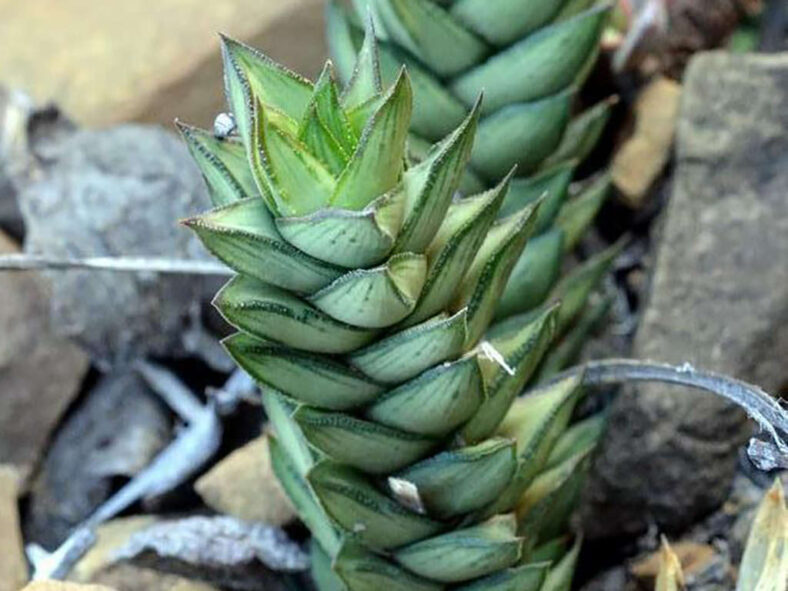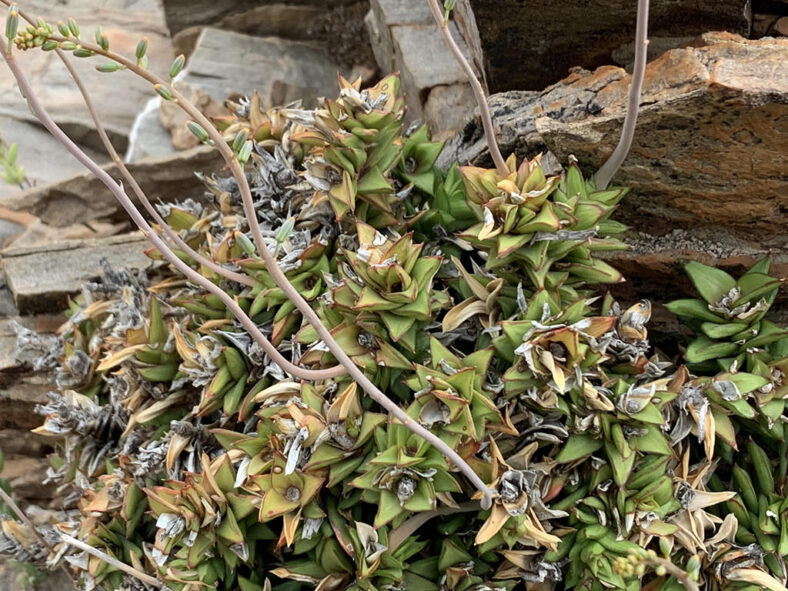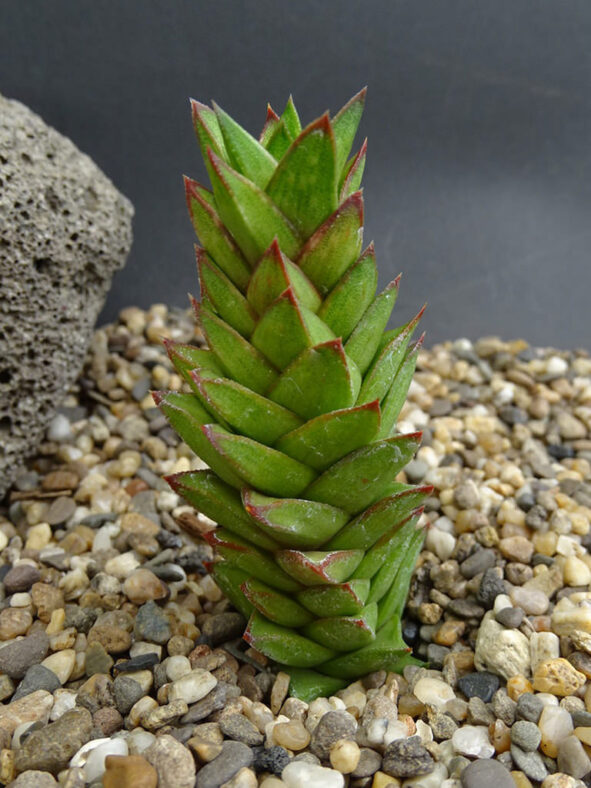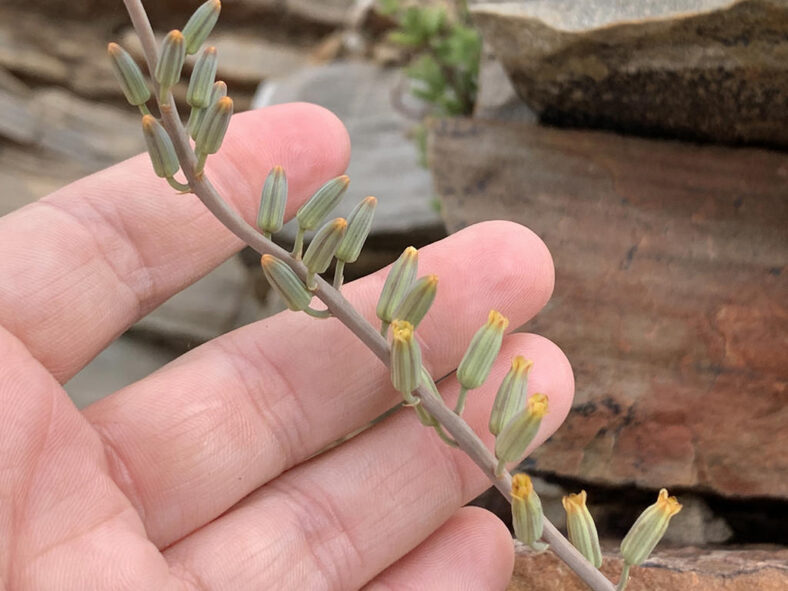Astroloba pentagona is similar to Astroloba bullulata, but it can be distinguished by its lighter green, longer, sharper, straighter leaves that usually have longitudinal lines. Taxonomically, Astroloba pentagona was formerly considered a synonym of Astroloba spiralis, a classification that is no longer accepted. It is also sometimes referred to as Astroloba hallii, although this name has not been formally published.
Scientific Name
Astroloba pentagona (Haw.) Uitewaal
Synonym(s)
Aloe pentagona, Apicra pentagona, Haworthia pentagona
Scientific Classification
Family: Asphodelaceae
Subfamily: Asphodeloideae
Genus: Astroloba
Etymology
The specific epithet "pentagona" (pronounced "pent-uh-GON-uh") means "pentagon" and refers to the leaves of this species that are typically arranged in five rows along the stem.
Origin
Astroloba pentagona is native to South Africa. It occurs on rocky ridges in shale soils located south and east of Laingsburg in the Western Cape province.
Description
Astroloba pentagona is a small succulent with crowded leaves arranged in five rows along slender, usually upright or sometimes sprawling stems. It slowly produces offsets from the base, forming a dense clump over time. The stems can grow up to 6 inches (15 cm) long. The leaves are smooth, triangular, and taper to a very sharp point. They are green and typically have dark longitudinal lines. Occasionally, some leaves may have tubercles, which always occur along the striations. When exposed to intense sunlight, the leaves may turn brownish.
From late spring to early fall, Astroloba pentagona produces small, tubular, yellowish flowers on slender, usually unbranched stalks that can grow over 12 inches (30 cm) long.

How to Grow and Care for Astroloba pentagona
Light: Astroloba pentagona thrives when provided with some protection from direct sunlight. If it has spent the winter indoors, gradually move the plant outdoors into the bright sunlight to prevent sunburn.
Soil: This plant prefers well-draining soil and does not like its roots to remain wet for prolonged periods. You can use commercial soil for succulents or make your own potting mix.
Temperature: Astroloba pentagona tolerates warmer temperatures in the summer but prefers cooler temperatures in the winter. It grows best in USDA Plant Hardiness Zones 10a to 11b, with average minimum winter temperatures ranging from 30°F to 50°F (-1.1°C to 10°C).
Watering: Water the plant thoroughly during its most active growth periods in spring and fall. Wait until the top of the soil dries out before watering again. Reduce the watering frequency when the plant's growth slows significantly in winter. When the plant is mostly dormant in summer, water it just enough to keep the leaves from shriveling.
Fertilizing: Although Astroloba pentagona does not require much fertilizer, feeding it can encourage optimal growth. Use a water-soluble fertilizer only during the growing season.
Repotting: This plant can remain in the same pot for several years. To keep it healthy and happy, repot it into fresh soil every two to three years, ideally in spring or fall.
Propagation: Astroloba pentagona can be easily propagated by offsets and cuttings, but can also be started from seeds. Remove the offsets and take cuttings during the growing season. Sow the seeds in spring or fall.
See more at How to Grow and Care for Astroloba.
Toxicity of Astroloba pentagona
Astroloba pentagona is considered non-toxic and safe around kids and pets.
Links
- Back to genus Astroloba
- Succupedia: Browse succulents by Scientific Name, Common Name, Genus, Family, USDA Hardiness Zone, Origin, or cacti by Genus
Photo Gallery
Click on a photo to see a larger version.


